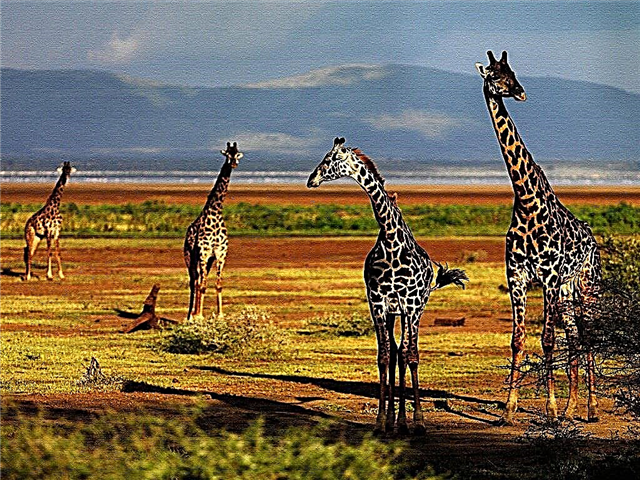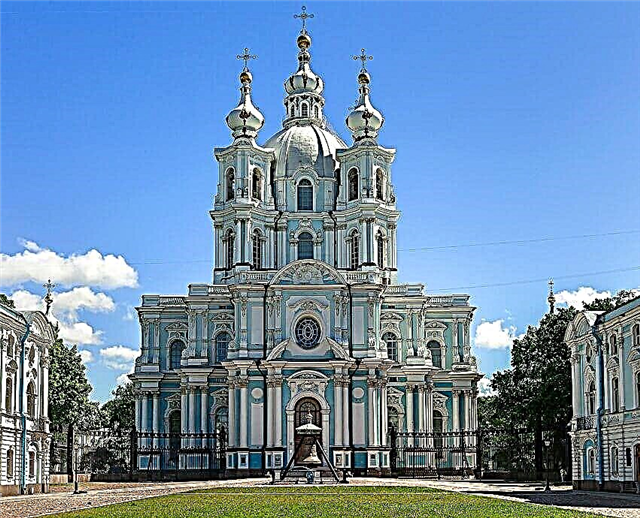Winter is a controversial season. The Russian winter was splendidly sung by Alexander Pushkin. In addition, winter has been the time of the happiest holidays since time immemorial. Both adults and children are looking forward to the New Year and the weekend and holidays associated with this date and Christmas with approximately equal impatience.

On the other hand, winter is cold and associated problems in the form of colds, the need to dress warmly and the associated costs and inconveniences. The day in winter is short even in the European part of the country, not to mention the higher latitudes, which also does not add to the mood. If it snows, it's a transport problem. There will be a thaw - everything drowns in water and dirty snow porridge ...
One way or another, winter exists, albeit in different guises, sometimes severe, sometimes funny.
1. Winter is not December, January and February. Rather, this definition is relevant, but only for most of the Northern Hemisphere. In the Southern Hemisphere, winter is what we think of as summer months. More precisely, it will define winter in nature as the interval between summer and autumn or as the coldest season.

In Brazil, if there is snow, it is in July
2. Winter does not come from a change in the distance from the Earth to the Sun. The Earth's orbit is slightly elongated, but the 5 million kilometers difference between perihelion and aphelion (the largest and smallest distance to the Sun) cannot play a big role. But the 23.5 ° tilt of the earth's axis in relation to the vertical affects, if we compare the weather in mid-latitudes in winter and summer, it is very strong. The sun's rays fall on the ground at an angle close to a straight line - we have summer. They fall tangentially - we have winter. On the planet Uranus, due to the tilt of the axis (it is more than 97 °), there are only two seasons - summer and winter, and they last 42 years.

3. The most severe winter in the world is the Yakut one. In Yakutia, it can start in mid-September. The coldest settlement in the world with a permanent population is also located in Yakutia. It is called Oymyakon. Here the temperature was -77.8 ° С, “not winter” - the local name - lasts from late May to mid-September, and children do not go to school only if the frost is stronger than -60 ° С.

People live and work in Oymyakon
4. The lowest temperature on Earth was recorded in Antarctica. In the area of the Japanese polar station, the thermometer once showed -91.8 ° C.
5. Astronomically, winter in the Northern Hemisphere begins on December 22 and ends on March 21. For the antipodes, winter begins on June 22 and ends on September 21.
6. Climatic winters are more relative in terms of terms than astronomical ones. In the latitudes where Russia is located, the beginning of winter is considered a day during which the average air temperature did not exceed 0 ° С. Winter ends with the reverse crossing of the same temperature threshold.
7. There is a concept of “nuclear winter” - a persistent cold snap caused by massive nuclear explosions. According to a theory developed at the end of the 20th century, megatons of soot lifted into the atmosphere by atomic explosions will limit the flow of solar heat and light. The air temperature will drop to the values of the Ice Age, which will be a disaster for agriculture and wildlife in general. In recent years, the concept of a "nuclear winter" has been criticized by both optimists and pessimists. Some semblances of a nuclear winter in the memory of mankind have already been - in 1815, during the eruption of the Tambora volcano in Indonesia, so much dust got into the atmosphere that the next year in Europe and America was called “a year without summer”. Two centuries earlier, three abnormally cold years caused by a volcanic eruption in South America had caused famine and political turmoil in Russia. The Great Troubles began, which almost ended in the death of the state.
8. There is a widespread idea that in the winter of 1941 German troops would have taken Moscow if it were not for "General Frost" - the winter was so severe that Europeans who were not used to cold weather and their equipment could not fight. That winter is indeed one of the ten most severe in Russia in the CC century, but severe cold weather began in January 1942, when the Germans were driven back from Moscow. December 1941, in which the offensive of the Red Army took place, was rather mild - the temperature dropped below -10 ° C in a matter of days.

They were not warned about frost
9. As practice shows, in modern Russia a disaster is not a harsh, but an unstable winter. Winter 2011/2012 is a good illustration. In December, the consequences of the freezing rain were catastrophic: thousands of kilometers of broken wires, a mass of fallen trees, and human casualties. At the end of January, it became sharply colder, the temperature stably kept below -20 ° C, but nothing particularly serious happened in Russia. In neighboring countries with a warmer climate (and around Russia, all countries with a warmer climate), people froze in dozens.

Freezing rain is often more dangerous than severe frosts
10. In winter 2016/2017, snow fell in the most exotic places for snowfall. Some of the Hawaiian Islands were covered with almost a meter of snow. Before that, their inhabitants could see snow live only in the highlands. Snow fell in the Algerian part of the Sahara Desert, Vietnam and Thailand. Moreover, snow fell on the last two countries at the end of December, that is, in the middle of summer, which led to corresponding consequences for agriculture.

Snow in the Sahara
11. Snow is not always white. In America, sometimes red snow falls - it is stained by an alga with the dubious name Chlamydomonas. Red snow tastes like watermelon. In 2002, snow of several colors fell in Kamchatka - sandstorms thousands of kilometers from the peninsula raised dust and grains of sand into the atmosphere, and they colored the snowflakes. But when in 2007 residents of the Omsk region saw orange snow, it was not possible to establish the cause of the color.

12. The most popular winter sport is hockey. But if a few decades ago hockey was the prerogative of countries with a pronounced winter, now ice hockey - and even at a professional level - is played in such non-winter countries as Kuwait, Qatar, Oman, Morocco.
13. The first and only battle between the land forces and the navy took place in the winter of 1795 on the roadstead of the Dutch city of Den Helder. The winter then happened very harsh, and the Dutch fleet was frozen into the ice. Upon learning of this, the French launched a covert night attack on the ships. Having wrapped the horseshoes with rags, they managed to covertly approach the ships. Each horseman also carried an infantryman. The forces of a hussar regiment and an infantry battalion captured 14 battleships and a number of escort vessels.

Epic fight
14. Even a small layer of snow, when melted, gives a very decent amount of water. For example, if on 1 hectare of land there is a layer of snow 1 cm thick, after thawing the earth will receive about 30 cubic meters of water - half of a railway tank car.
15. California - the state is not only sunny, but also snowy. In the city of Silverlake in 1921, snow fell 1.93 m high per day. California also holds the world record for the amount of snow that fell during one snowfall. On Mount Shesta in 1959, 4.8 meters of snow fell during a week of continuous precipitation. The United States holds two more winter records. In the city of Browning (Montana) on the night of January 23-24, 1916, the temperature dropped by 55.5 ° C. And in South Dakota, in the city of Spearfish on the morning of January 22, 1943, it warmed immediately by 27 °, from -20 ° to + 7 ° С.










